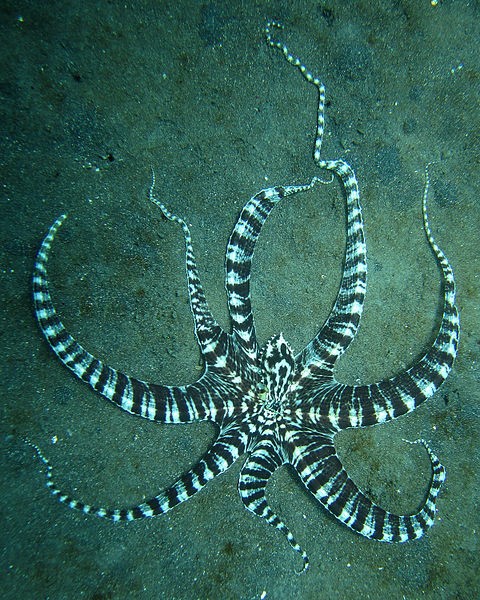For years, scientists have studied the foundations of biology using only a few creatures. Fruit flies, zebrafish, and mice, for example, all have short lifespans, tiny bodies that can be raised in the lab for several generations, and have been designed for genetic research.
Until recently, scientists have lacked access to a cultivated octopus laboratory organism, and these research species exclude a wide range of biological varieties. The pygmy zebra octopus (O. chierchiae) is a new species of octopus.

Researchers from the Marine Biological Laboratory (MBL) introduce scientists to effective rearing methods for O. chierchiae established at the MBL in a recent publication published in the journal Frontiers in Marine Science.
"When compared to other octopuses, the pygmy zebra octopus has particular biological properties that make it more appealing and ideal for laboratory study," explains Bret Grasse, MBL's manager of Cephalopod Operations and co-author on the report.
Related Article : Female Octopus Avoids Harassment By Hurling Shells at Persistent Male
Pygmy Zebra Octopus
The pygmy zebra octopus, also known as the "lesser Pacific striped octopus," shares many vital commonalities with other study creatures, such as tiny mature body size. Still, it also has unique characteristics that set it apart from other cephalopods (the group of animals that include octopus, squid, and cuttlefish).
"The majority of octopuses are 'live fast, die young,'" explains Anik Grearson, a former MBL intern and co-lead author of the article. "They reproduce once, then instantly start to senesce and age, and then die very swiftly." Unlike other octopus species, a female O. chierchiae produces numerous clutches of 30-90 eggs during her reproductive phase.
"We can mate them and predict when they'll lay their eggs, how long they'll incubate, and rear kids with a reasonably good survival rate compared to other octopuses," Grasse adds. It's simple to understand why O. chierchiae is an excellent target for future study and research, given its modest size, sexual dimorphism, and consistent breeding period.
Successfully Breeding
In 2019, the MBL's Cephalopod Mariculture team successfully bred O. chierchiae for the first time in the world. Closing the life cycle, or generating several generations in the lab, is crucial in biological study. It allows researchers to track gene function and mutational consequences from generation to generation.
Grasse believes that being able to grow octopuses in a lab successfully offers up "new research that hasn't been conceivable previously."
Studying Cephalopods
Cephalopods are studied by researchers at the MBL and worldwide to learn about anything from camouflage and limb dexterity to regeneration and neuroscience. The California two-spot octopus (O. bimaculoides), native to the seas off the coast of California, is used by most American scientists studying octopuses. However, because such octopuses have yet to be effectively produced in the laboratory across several generations, most scientists research wild-caught creatures brought in from California.
Octopuses are similarly territorial, requiring that each creature be kept separately. Adult two-spot octopuses are approximately the size of a baseball, and adult pygmy zebra octopuses are only about the size of a table grape, making the smaller species appropriate for laboratories with limited space.
"We now have this tiny octopus species that can be produced regularly," Grearson explains. "What individuals desire to achieve is only limited by their imagination."
For more animal news, don't forget to follow Nature World News!
© 2025 NatureWorldNews.com All rights reserved. Do not reproduce without permission.





